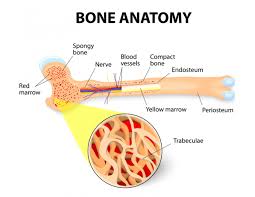
Recently Diagnosed or Relapsed? Stop Looking For a Miracle Cure, and Use Evidence-Based Therapies To Enhance Your Treatment and Prolong Your Remission
Multiple Myeloma an incurable disease, but I have spent the last 25 years in remission using a blend of conventional oncology and evidence-based nutrition, supplementation, and lifestyle therapies from peer-reviewed studies that your oncologist probably hasn't told you about.
Click the orange button to the right to learn more about what you can start doing today.
- You are here:
- Home »
- Blog »
- Multiple Myeloma »
- What Foods Help Multiple Myeloma?
What Foods Help Multiple Myeloma?

“Potent antiangiogenic molecules have now been identified in dietary sources, suggesting that a rationally designed antiangiogenic diet could provide a safe, widely available, and novel strategy for preventing cancer.”
Hi David- I received a multiple myeloma diagnosis last month after being admitted into the ER with excruciatingly lower back pain. Not only did the CT scan reveal and pathological fracture, the test revealed lesions and the diagnosis of multiple myeloma.
I was told I have a IgA Kappa MM; M-Spike of 1.2, FKLC 71.7, FLLC 5.2, K/L ratio 13.8, IgA 1,361.
Since my doctor didn’t provide to much info about foods, I wanted to ask you about the do’s and don’ts.
After I received my multiple myeloma diagnosis I was put on R/V/D (revlimid, velcade, dexamethasone).
I wanted to know what I should be including in my diet. I’m a healthy eater but not sure what I should avoid or eat more of as far as fruits and vegetables.
Also my numbers went up on my liver panel and I was wondering if its ok to drink natural teas that detox the liver.
- HBOT,
- IV vit C,
- ozone therapy or
- hyperthermia.
Last question I wanted to start with CBD/THC to help fight the camcer cells and help me sleep.
Any info is greatly appreciated Thank you Joan
Hi Joan-
I am sorry to read of your MM diagnosis.
Thanks for reaching out. Just so I can understand your situation, have you been diagnosed with MGUS or pre-MM or have you been diagnosed with full-blown MM?
- Hyperbaric oxygen therapy
- Intravenous vitamin C therapy
- Ozone therapy
- Hyperthermia-
I have found studies that cite IVC as being cytotoxic to MM. IVC is non-toxic, anti-MM and will “pre-habilitate” you. See the study linked below.
I have not found studies that cite HBOT as being anti-MM. I underwent HBOT myself for nerve damage but I cannot recommend it for reducing your risk of progression to MM.
Same for ozone therapy.
Whole body hyperthermia- I think WBH is a cancer therapy in general but I cannot say it is a MM therapy. For the record, I sauna several times a week (pre-Covid anyway…).
- Curcumin
- Resveratrol
- Omega-3 fatty acids
- Green Tea Extract (EGCG)
- CBD oil- high percentage of cannabinoids
- MM Survivor
- MM Cancer Coach
- Director PeopleBeatingCancer
Recommended Reading:
Tumor Angiogenesis as a Target for Dietary Cancer Prevention
“Judah Folkman first proposed antiangiogenesis as a strategy for preventing dormant microtumors from progressing to invasive cancer. Although antiangiogenic drugs are now available for many advanced malignancies (colorectal, lung, breast, kidney, liver, brain, thyroid, neuroendocrine, multiple myeloma, myelodysplastic syndrome), cost and toxicity considerations preclude their broad use for cancer prevention.
Potent antiangiogenic molecules have now been identified in dietary sources, suggesting that a rationally designed antiangiogenic diet could provide a safe, widely available, and novel strategy for preventing cancer.
“Whole-body hyperthermia is used to treat metastatic cancer that has spread throughout the body. This can be accomplished by several techniques that raise the body temperature to 107-108°F, including the use of thermal chambers (similar to large incubators) or hot water blankets.The effectiveness of hyperthermia treatment is related to the temperature achieved during the treatment, as well as the length of treatment and cell and tissue characteristics (1, 2). To ensure that the desired temperature is reached, but not exceeded, the temperature of the tumor and surrounding tissue is monitored throughout hyperthermia treatment (3, 5, 7). Using local anesthesia, the doctor inserts small needles or tubes with tiny thermometers into the treatment area to monitor the temperature. Imaging techniques, such as CT (computed tomography), may be used to make sure the probes are properly positioned (5)…”
Multiple Myeloma Tumor Cells are Selectively Killed by Pharmacologically-dosed Ascorbic Acid
Highlights
- •Pharmacologically-dosed ascorbic acid kills Multiple Myeloma cells.
- •Pharmacologically-dosed ascorbic leads to apoptosis-inducing factor 1 cleavage.
- •Pharmacologically-dosed ascorbic lowers melphalan dosage.
Multiple myeloma (MM) remains a difficult to cure disease in the majority of cases. Several preclinical and clinical studies have shown that ascorbic acid in pharmacologic doses (PAA) selectively kills cancer cells, while sparing normal cells. This article reveals the biological mechanism by which PAA exerts its anti-cancer effects and should lead to the development of an innovative therapy in MM…”
Gadolinium Containing Contrast Agent Promotes Multiple Myeloma Cell Growth: Implication for Clinical Use of MRI in Myeloma.
“Gadolinium (Gd)-based contrast agents are frequently used to enhance MRI resolution. We evaluated effect of the most common Gd-containing agent, Omniscan, on myeloma cells. We observed that Omniscan induced both time and dose dependent MM cell growth in vitro (8-20 fold increase relative to control). Importantly, the presence of BMSC enhanced the effect of Omniscan on growth of both MM cell lines and primary MM cells…”

